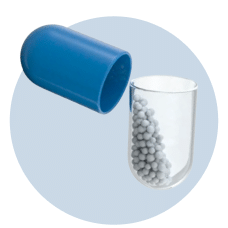Dolbis-MR Gel
Product introduction
Dolbis-MR Gel is only meant for external use and should be used strictly as advised by your doctor. Rub a thin layer of the medicine into the affected areas with clean and dry hands. Avoid getting in contact with your eyes, nose, or mouth and avoid applying it on wounded or damaged skin. In case of accidental contact with these areas, you should rinse it with plenty of cold water.
It is generally well-tolerated with little or no side effects. However, it may cause burning or stinging sensation at the site of application in some people. These are usually temporary and resolve with time. If they get worse or do not go away, you should let your doctor know.
Although medicines used on the skin are not normally affected by other medicines you should let your doctor know if you are taking any other medicine to be safe. You should also let your doctor know if you have any medical conditions or disorders to make sure it is safe. Ask your doctor for advice if you are pregnant or breastfeeding.
Uses of Dolbis-MR Gel
Side effects of Dolbis-MR Gel
Common side effects of Dolbis-MR
- Limited data available
How to use Dolbis-MR Gel
How Dolbis-MR Gel works
Safety advice
What if you forget to take Dolbis-MR Gel?
All substitutes
Quick tips
- Dolbis-MR Gel is used to treat certain types of long-lasting pain caused by damage to nerves.
- Wash your hands before and after applying Dolbis-MR Gel to the affected area.
- Dolbis-MR Gel may ease the pain within a few days but it may take 2-3 weeks before you see maximum benefit.
- Inform your doctor if you are using any other pain-relieving medicines.
- Along with taking Dolbis-MR Gel, your doctor might advise you to undergo physiotherapy to get relief from pain.
Fact Box
Patient concerns
Disclaimer:
Tata 1mg's sole intention is to ensure that its consumers get information that is expert-reviewed, accurate and trustworthy. However, the information contained herein should NOT be used as a substitute for the advice of a qualified physician. The information provided here is for informational purposes only. This may not cover everything about particular health conditions, lab tests, medicines, all possible side effects, drug interactions, warnings, alerts, etc. Please consult your doctor and discuss all your queries related to any disease or medicine. We intend to support, not replace, the doctor-patient relationship.References
- Furst DE, Ulrich RW, Prakash S, et al. Nonsteroidal Anti-Inflammatory Drugs, Disease-Modifying Antirheumatic Drugs, Nonopioid Analgesics, & Drugs Used in Gout. In: Katzung BG, Masters SB, Trevor AJ (Editors). Basic and Clinical Pharmacology. 11th ed. New Delhi, India: Tata McGraw Hill Education Private Limited; 2009. pp. 621-642.
- Nicoll RA. Introduction to the Pharmacology of CNS Drugs. In: Brunton LL, Hilal-Dandan R, Knollmann BC (Editors). Goodman & Gilman’s: The Pharmacological Basis of Therapeutics. 13th ed. New York, NY: McGraw-Hill Education; 2018. pp. 360-371.
- Grosser T, Smyth EM, FitzGerald GA. Pharmacotherapy of Inflammation, Fever, Pain, and Gout. In: Brunton LL, Hilal-Dandan R, Knollmann BC (Editors). Goodman & Gilman’s: The Pharmacological Basis of Therapeutics. 13th ed. New York, NY: McGraw-Hill Education; 2018. pp. 685-709.
Marketer details
The list of available options shown with the same composition has been prepared upon the advice of registered medical practitioners, pharmacists affiliated with TATA 1MG. TATA 1MG does not promote any pharmaceutical product of any particular company, and all recommendations are based on the medical opinion, advisories from specialist medical and pharmaceutical professionals.
Lab tests offered by us









